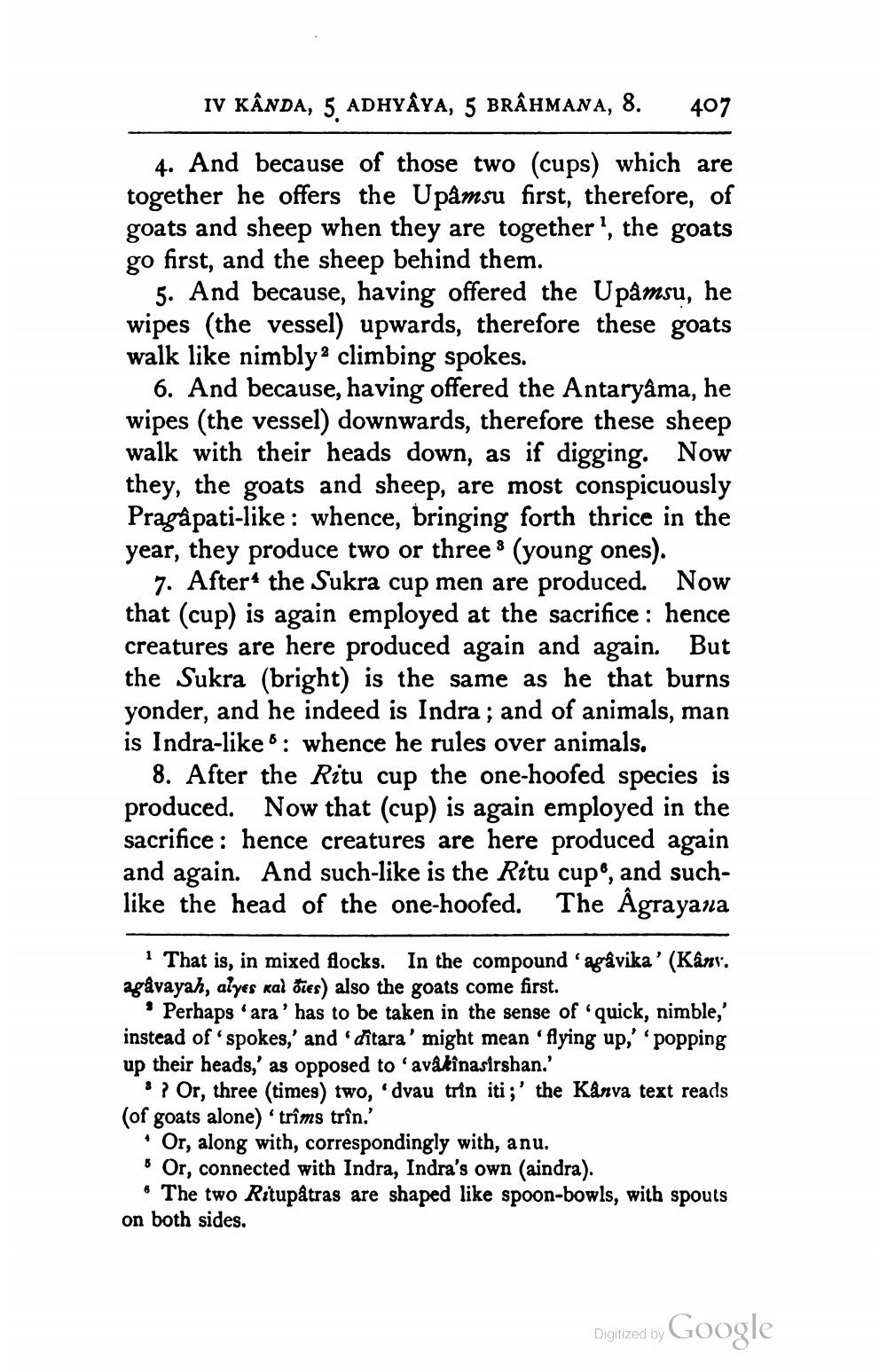________________
IV KANDA, 5. ADHYAYA, 5 BRÂHMANA, 8.
407
4. And because of those two (cups) which are together he offers the Upåmsu first, therefore, of goats and sheep when they are together, the goats go first, and the sheep behind them.
5. And because, having offered the Upåmsu, he wipes (the vessel) upwards, therefore these goats walk like nimbly? climbing spokes.
6. And because, having offered the Antaryâma, he wipes (the vessel) downwards, therefore these sheep walk with their heads down, as if digging. Now they, the goats and sheep, are most conspicuously Pragàpati-like: whence, bringing forth thrice in the year, they produce two or three 8 (young ones).
7. After the Sukra cup men are produced. Now that (cup) is again employed at the sacrifice: hence creatures are here produced again and again. But the Sukra (bright) is the same as he that burns yonder, and he indeed is Indra ; and of animals, man is Indra-like 6: whence he rules over animals.
8. After the Ritu cup the one-hoofed species is produced. Now that (cup) is again employed in the sacrifice: hence creatures are here produced again and again. And such-like is the Ritu cups, and suchlike the head of the one-hoofed. The Âgrayana
1 That is, in mixed flocks. In the compound agavika' (Kâni. agavayah, alyes kal ties) also the goats come first.
* Perhapsara' has to be taken in the sense of quick, nimble,' instead of spokes,' and 'ditara' might mean 'flying up,' 'popping up their heads, as opposed to avakinasirshan.'
s? Or, three (times) two, dvau trin iti;' the Kånva text reads (of goats alone) trîms trîn.'
Or, along with, correspondingly with, anu. * Or, connected with Indra, Indra's own (aindra).
• The two Ritupåtras are shaped like spoon-bowls, with spouts on both sides.
Digitized by Google




